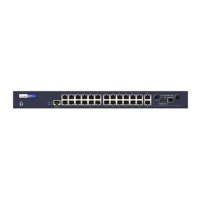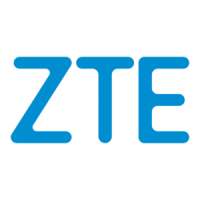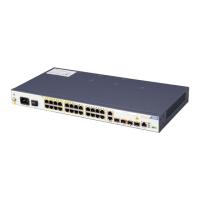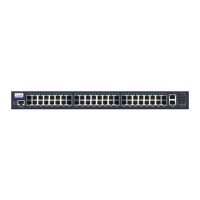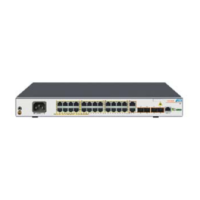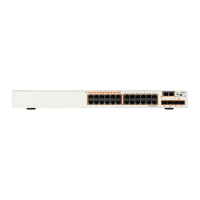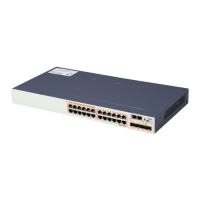Do you have a question about the Zte ZXR10 2952E and is the answer not in the manual?
Ensures redundancy backup and fast switch through STP/RSTP/MSTP, LACP, and ZESR.
Details flexible VLAN classification, L2 VPN, port location technology, and L2 multicast for IPTV.
Covers user level security (802.1x, MAC/IP/VLAN/PORT combination, port isolation, GuestVlan, DHCP monitoring) and equipment level security.
Explains QoS applications, classification, and queue scheduling algorithms like SP and SP+WRR.
Describes management through SNMP, RMON, ZXNM01, CLI (Console, Telnet, SSH), and Web.
Details various configuration modes including console port, Telnet, SNMP, and WEB connections.
Explains User Mode, Global Configuration Mode, SNMP Configuration Mode, and others.
Covers online help, command abbreviations, historical commands, and functional keys for CLI usage.
Covers directory and file operations, including creation, deletion, renaming, and listing.
Details steps to configure the TFTP server for version file and configuration backup/restore.
Explains how to export system configuration to a file and import configuration from a file.
Describes backing up configuration files using 'write' command and recovering via TFTP.
Explains the automatic software download function for undeployed devices using DHCP and TFTP.
Details how to configure automatic saving of configuration files to a TFTP server.
Provides procedures for upgrading software version when the system is normal or abnormal.
Covers mode switch, console attributes, global information, and user access configuration.
Details port parameters like auto-negotiation, duplex mode, rate, and line detection.
Explains Power over Ethernet features, including maximum power and port priorities.
Covers Virtual Local Area Network configuration, including tagged and untagged ports.
Details MAC addition/deletion, aging time, filtering, learning control, and alarm control.
Covers Link Aggregation Control Protocol for bandwidth and redundancy.
Explains IGMP snooping for efficient multicast traffic management.
Details Spanning Tree Protocol (STP), RSTP, and MSTP for loop prevention.
Covers Access Control List configuration for packet filtering and security policies.
Explains Quality of Service features like rate limiting, shaping, and queue scheduling.
Details IPv4 interface configuration, static routes, and ARP table management.
Covers 802.1x and RADIUS for user authentication and management.
Explains MAC-based authentication for devices without 802.1x clients.
Details ZTE Ethernet Smart Ring for network reliability and fast fault convergence.
Covers Operation, Administration, and Maintenance functions for link monitoring and fault detection.
Details Link Layer Discovery Protocol for neighbor discovery and topology information.
Explains how to detect and prevent port loops to avoid broadcast storms.
Covers UniDirectional Link Detection for identifying and preventing unidirectional links.
Details Terminal Access Controller Access-Control System Plus for AAA services.
Explains how to allocate a dedicated VLAN for voice data to ensure call quality.
Covers Connectivity Fault Management for checking and reporting network faults.
Restricts network management access to specific IP addresses to enhance security.
Provides secure remote access and network services using encrypted data.
Levels command access and grants permissions based on user privilege levels.
Explains the Simple Network Management Protocol for network monitoring and management.
Details ZTE Group Manage Protocol for managing clusters of switches.
Describes the embedded Web server for remote switch management via a web browser.
Outlines daily and monthly maintenance items for switch upkeep and environment checks.
Explains Virtual Line Detection (VCT) using TDR for line diagnosis and fault location.
Provides troubleshooting steps for common hardware and software faults.
| Model | ZXR10 2952E |
|---|---|
| Category | Switch |
| Jumbo Frame | 9K |
| Weight | 4.5 kg |
| Storage Temperature | -40°C to 70°C |
| Operating Humidity | 10% to 90% non-condensing |
| Storage Humidity | 5% to 95% non-condensing |
| Dimensions | 440 mm x 44 mm x 300 mm |
| Power Supply | AC 100-240V, 50/60Hz |
| VLAN | 4K VLAN |
| Operating Temperature | 0°C to 45°C |
